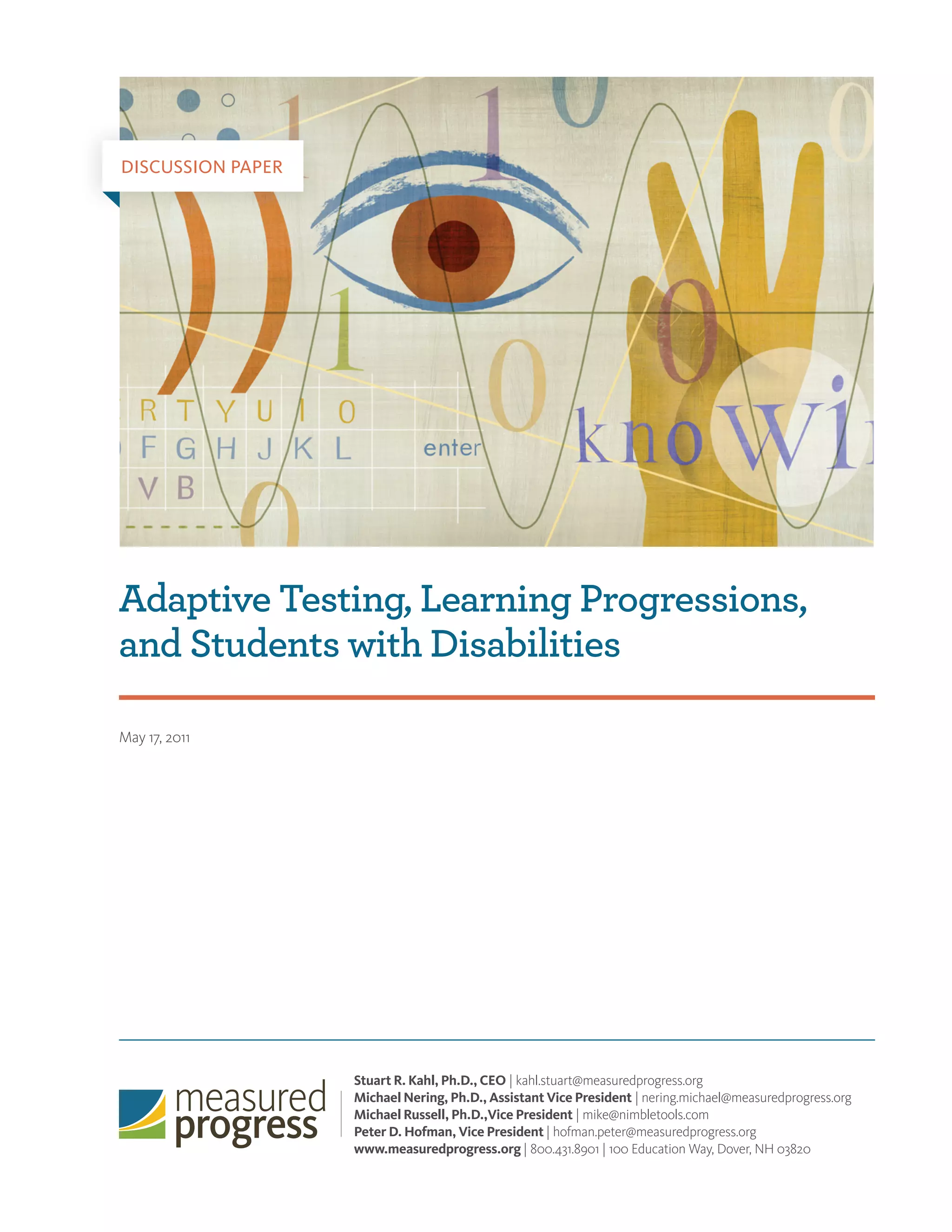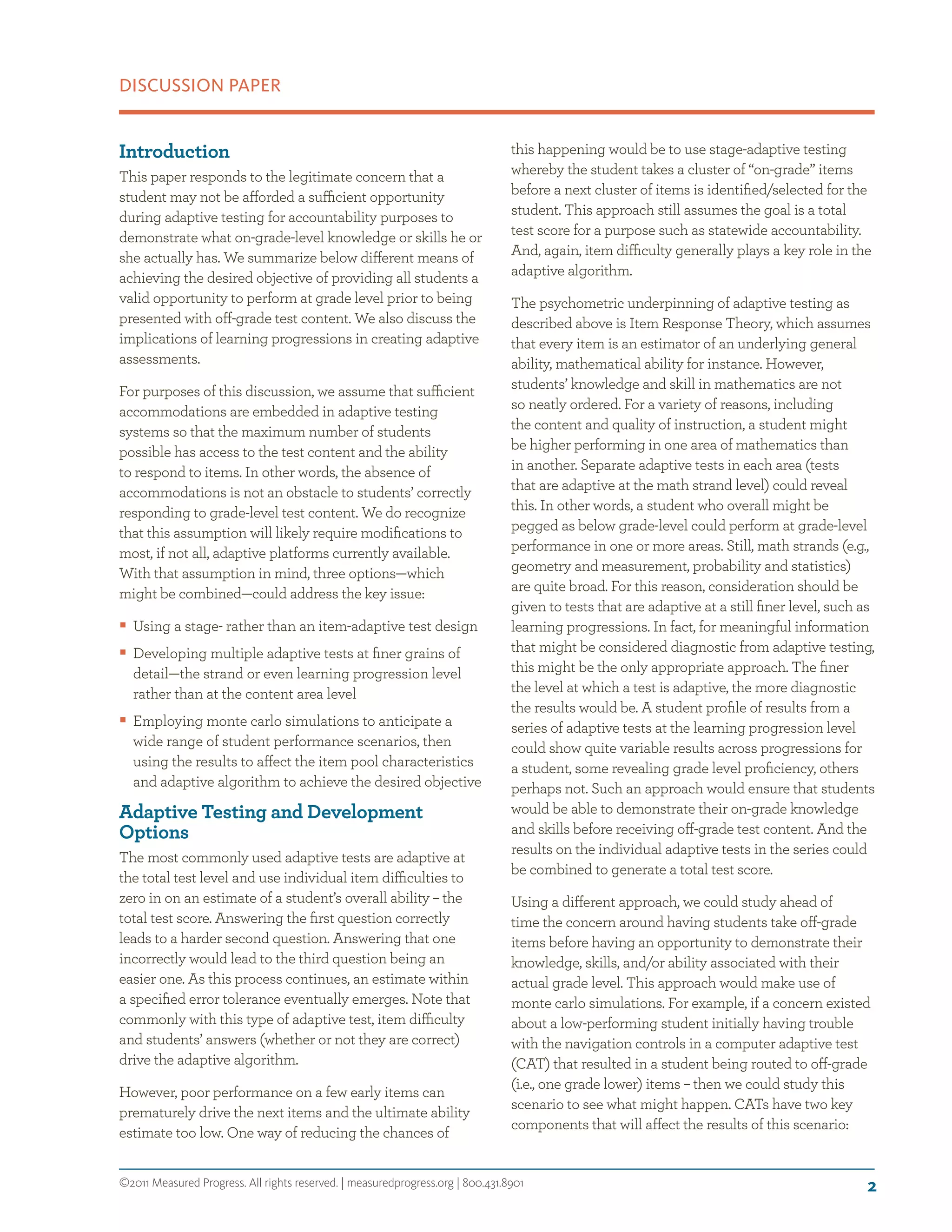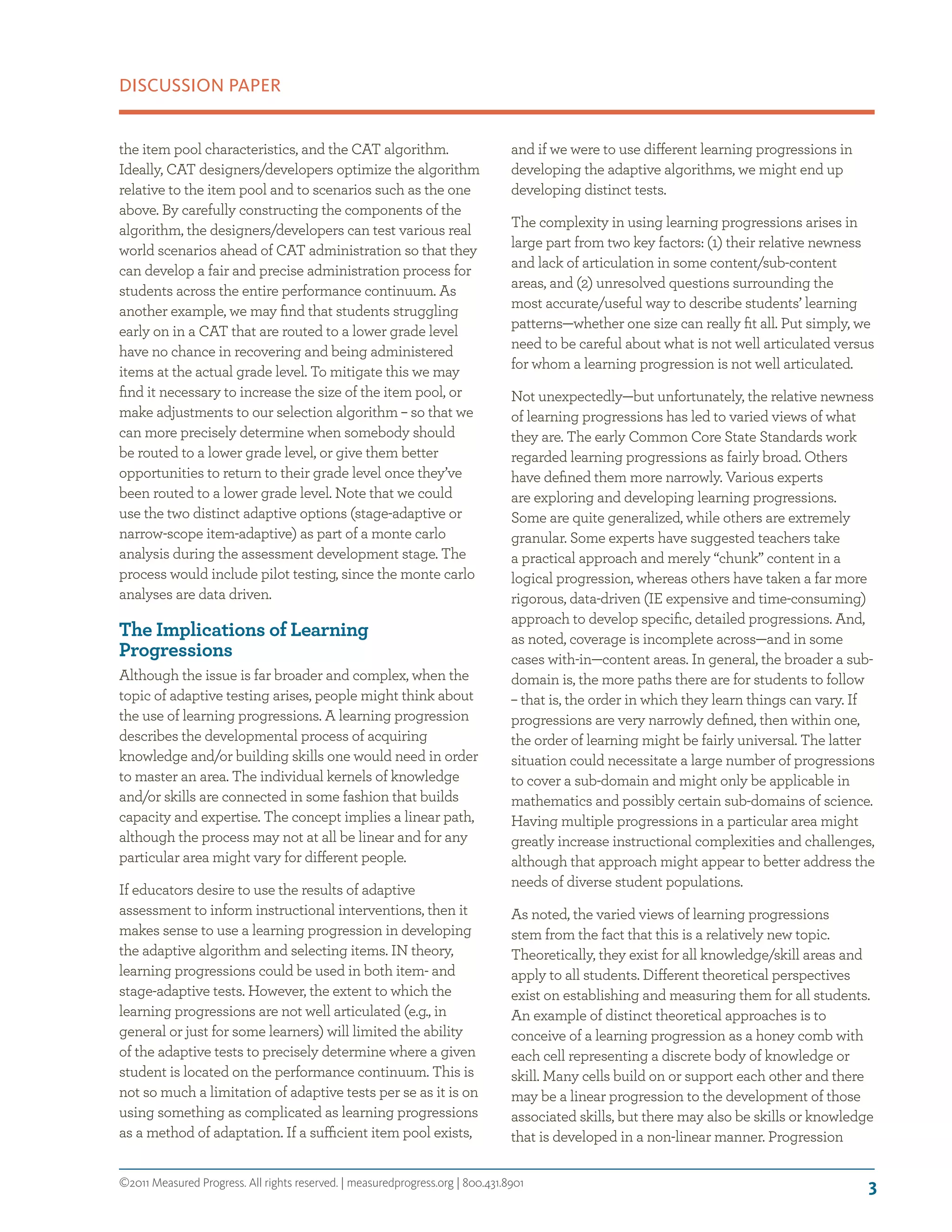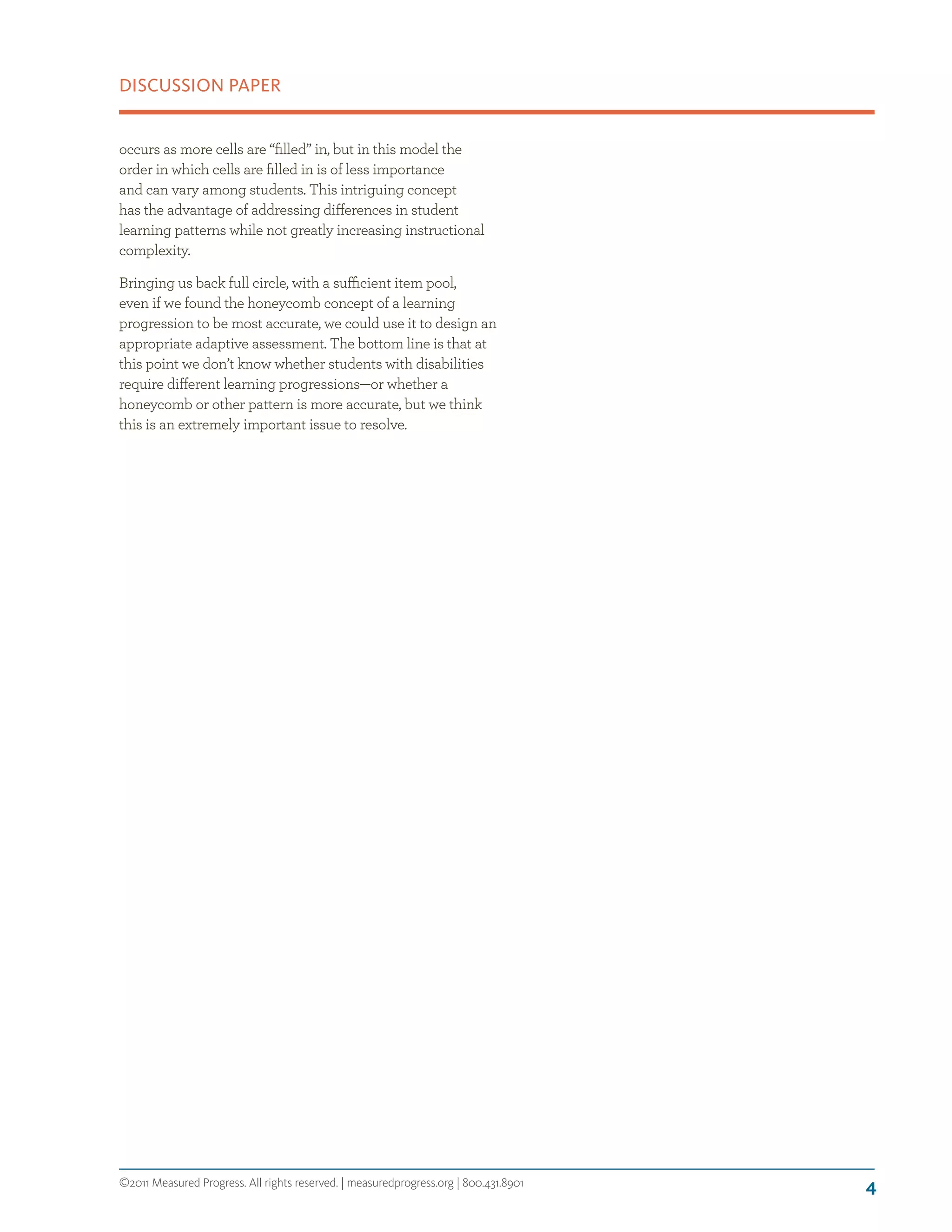This document discusses options for developing adaptive tests that provide students with disabilities a valid opportunity to demonstrate their on-grade level knowledge and skills. It proposes three options: 1) using stage-adaptive testing where students take clusters of on-grade items before moving to off-grade items, 2) developing adaptive tests at finer grains like the strand or learning progression level, and 3) using simulations to optimize the item pool and algorithm. It also discusses challenges in using learning progressions for adaptation given their newness and lack of articulation in some areas.



